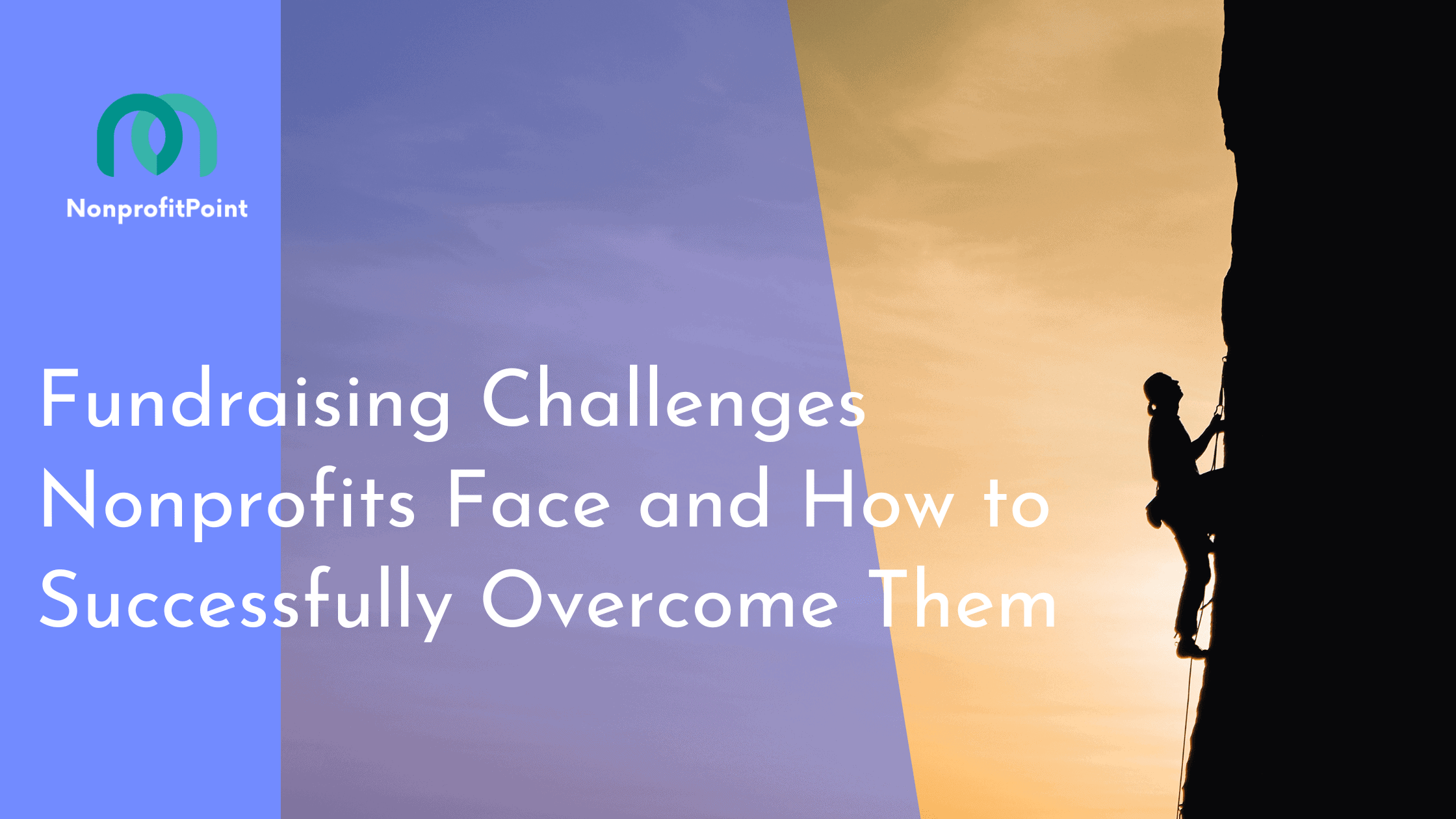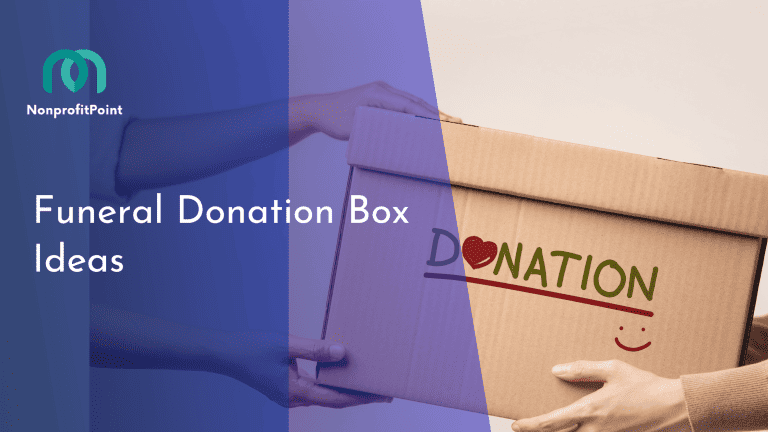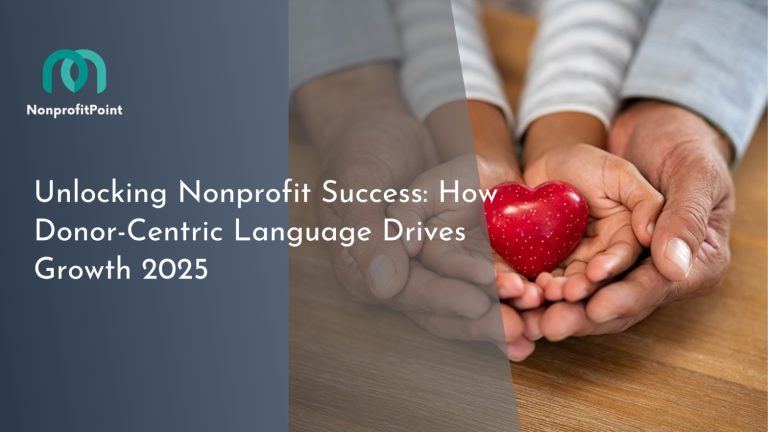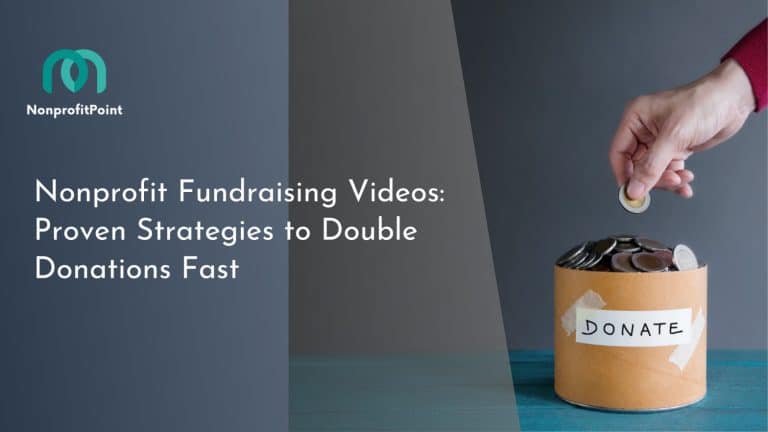16 Fundraising Challenges Nonprofits Face and How to Successfully Overcome Them
As any nonprofit will tell you, fundraising is an ongoing challenge. Even the most well-established and successful nonprofits face continual financial pressures that require constant vigilance and strategic planning to survive, much less thrive. And while there are many common challenges that all nonprofits face, every organization has its own set of individual issues and circumstances as well.
Some might struggle with a small donor base or lack of visibility in their community. Others may have trouble getting board members engaged or keeping them interested over time. A third group may find it challenging to get new programs off the ground for one reason or another.
Whatever your unique set of challenges may be as a nonprofit organization, working through them is just part of the job of being an effective leader in the world and serving your mission effectively.
In this article, we’ll explore some 16 common fundraising challenges faced by nonprofits and how you can successfully overcome them.
- Building donor engagement
- Finding the right staff and volunteers
- Raising enough money
- Establishing your mission awareness
- Defining What Success Means for Your Organization
- Raising Awareness About Your Mission and Events
- Limited time and resources
- Knowing how to ask
- Finding the right donors
- Dealing with rejection
- Showing the continual impact of your work
- Deciding between fundraising events or leveraging technology
- Knowing your own organization’s strengths and weaknesses
- Having a reliable team by your side
- Finding the Right Partners
- Lack of Visibility
- 11 Ways to Overcome Fundraising Challenges
- Conclusion
Building donor engagement
One of the most common challenges nonprofits face is low donor engagement. Donors may offer their financial support frequently, but they may not do much else to help. Or they may not be happy with their level of engagement and feel neglected or unappreciated.
To build the level of engagement you want from your donors, you’ll first want to identify the donor engagement issues that are holding your organization back. Then you can develop a strategy to overcome them and create a culture of donor engagement that benefits both you and your donors.
First, you’ll want to analyze your donor retention rate over time to identify any drop-offs in engagement. If you notice that donors are giving less frequently or gifting smaller amounts over time, you may have a donor engagement problem on your hands. Ask your donors why they’re giving less often – and when they give, why they’re giving smaller amounts.
You may discover that they’re dissatisfied with their level of engagement with your organization and the level of appreciation they feel they’re receiving in return.
Finding the right staff and volunteers

Another common fundraising challenge is staff and volunteer burnout. If you have your employees and volunteers working too hard, they’ll get tired and stressed out, leading to high turnover rates and low productivity.
If you don’t have enough staff and volunteers, you’ll feel like you’re trying to lift an elephant with a plastic spoon. Finding the right people to hire or volunteer for your organization can help. But first, you’ll want to work on overcoming the challenges that are causing you to miss out on the right people in the first place.
Start with a clear, objective look at your staffing needs and your staffing resources. If one or more of your programs is lagging behind the rest, figure out why and get it back on track. If you have too many programs and not enough people to staff them, trim the fat and focus your organization on the programs that are most effective and most in need of staffing.
Raising enough money

If you have more programs and projects than you have money to cover, you’re going to have a problem. But before you can raise enough money, you’ll probably have to raise awareness about your mission and the important work your organization does.
Your potential donors need to know what you do, why it’s important, and why they need to get involved. You may also need to take a good, honest look at your fundraising strategy and make some changes.
You may be asking for the wrong amount of money from the wrong people, or be asking for money at the wrong times. You may be trying to do too much with too little, meaning you have to spread your fundraising efforts too thinly. If any of these issues apply to you, you’ll have to get them under control before you can raise enough money to sustain your organization.
Establishing your mission awareness

If your mission awareness is low, your fundraising challenges may be closely related to the challenges of low donor engagement. People who don’t know what your organization does and why it’s important won’t be motivated to support it, no matter how much you ask.
In fact, they may not even know how to give you money. You may have a mission awareness issue if people in your community ask you what your organization does and you don’t have a clear answer.
Or if you have a clear answer – but it’s not the one people are expecting to hear. You also may have a mission awareness problem if your donors don’t feel appreciated or if they feel like their gifts aren’t doing much. Now, mission awareness isn’t something you can easily change overnight. But you can work towards fixing it by identifying the issues holding your organization back and developing a strategy to overcome them.
Defining What Success Means for Your Organization

If you’re having trouble engaging donors and getting them to gift, you may be thinking that success means bringing in as much money as possible. But more money isn’t always better. If you define success too narrowly, you may miss out on other opportunities to have success.
For example, one major nonprofit medical research organization never set a fundraising goal. Why? Because they focused so narrowly on one specific research project that they didn’t even consider setting a fundraising goal.
Now, although their research project was important and valuable, it was only going to impact a relatively small number of people over the course of many years. By contrast, there are many different ways to have fundraising success for your nonprofit. You can build a large donor base that you can tap as needed to support multiple different programs.
You can offer your donors a variety of ways to give and ways to track their impact. You can promote your organization in a way that lets people engage with it in a way that appeals to them. And you can use fundraising strategies that don’t have a direct return on investment, like appreciation gifts or donor recognition.
Raising Awareness About Your Mission and Events
You’ll also want to look at what types of fundraising challenges you may be facing. If you’re having trouble getting people to notice your organization or what you do, you may need to raise awareness. Raising awareness isn’t a one-time thing – it’s an ongoing process. It’s like a garden that needs constant tending. You can’t just plant the seeds one time and then never think about the garden again until harvest time rolls around.
Instead, you have to keep nurturing your efforts over time to make sure your garden continues to grow and flourish. Now, you can try many different strategies for raising awareness about your organization and its mission.
- Use social media, email marketing, or other digital channels to promote your events and programs.
- Build partnerships with other organizations to promote each other.
- Submit articles and press releases to local media outlets.
- Provide media training to your board members and other leaders so they know how to answer questions and respond appropriately when they speak with the media.
- Work with a public relations firm to help promote your organization more broadly to the right people in the right places at the right times.
Limited time and resources
Sometimes, nonprofits may have all of the right people, the right programs, and the right funding, but they don’t have enough time to do everything they’d like. They may have too many programs that need attention and not enough hours in the day to give them the attention they deserve.
If this sounds like you, you’ll need to evaluate your programs to see which ones are most important to your organization. You’ll also need to decide which programs you want to scale back or eliminate. And you may want to look for outside help with your fundraising activities.
You can hire an outsourced fundraising company to handle your events or other large-scale fundraising projects. You can bring in outside experts to help you with special fundraising programs like capital campaigns, or you can bring in an executive director with fundraising experience.
Knowing how to ask
You can’t ask if you don’t know how. For many first-time fundraisers, this is the biggest challenge. Getting comfortable with asking people to give to your cause is something that can definitely be learned.
But once you get past that initial hurdle, you’re going to be just fine. Getting comfortable with asking people to give to your cause is something that can definitely be learned. But once you get past that initial hurdle, you’re going to be just fine. If it’s your first time asking for donations, you may be wondering where to start.
Ask people you know, like your friends and family, for starters. They’ll be more likely to donate if you ask them directly versus just hoping they’ll remember to send something on their own.
And if you’ve been fundraising for a while, it’s important to remember that asking donors for more is an essential part of being a nonprofit. You can’t just ask for money once and hope to never do it again. You need to be constantly asking for more donations to keep your organization afloat. If people stop donating, there’s no one to replace them, so your work would come to a screeching halt.
Finding the right donors
Finding the right donors is more important than ever. But how do you do it?
You need to figure out how to reach the right donors. Do you know where your donors live? What magazines do they read? What events do they attend?
While you may know the typical demographics of your donors, you need to know the specifics as well. Finding the right donors isn’t just about knowing who they are — it’s also about knowing how to reach them.
For example, if you’re a nonprofit that works with children, you may want to focus on reaching parents. Children can’t donate on their own, so finding donors among them isn’t an option. And don’t forget to reach out to potential donors who can’t donate monetarily — like people in your field who can offer expertise and advice. You don’t want to miss out on the support of your peers and colleagues.
Dealing with rejection
You will face rejection when fundraising. It’s a given. No matter how good your cause is, or how hard you work to fundraise, you will be turned down by some people. This is normal. In fact, you should expect it to happen.
However, there are ways to turn rejection into opportunity:
- Ask for feedback: If someone turns you down for a donation, don’t just thank them and walk away. Instead, ask for their feedback. Why did they turn you down? What would have made them donate to your cause? You can use this information to improve your overall fundraising strategy.
- Ask for advice: You may also want to ask for advice from the people who turn you down. Again, you can use this information to improve your strategy. You may also want to ask them if they know anyone else who may be interested in giving to your cause.
Showing the continual impact of your work
Some nonprofits only ask for donations once. Once that donation period ends, they don’t ask again. And while this may work for some organizations, it isn’t the best option for others.
While it’s important to show that your work has an impact on those you serve, it’s also important to show it on a continual basis. That way, donors know their donations are making a real and lasting difference.
One way to do this is by hosting fundraisers that focus on showing the impact of your work.
For example, if you offer to tutor children who are struggling in school, you can host a fundraiser that allows donors to interact with the children they’re helping. This will allow donors to see the work they’re funding firsthand, which is much more effective than a news article or general overview of your work.
Deciding between fundraising events or leveraging technology
Is it better to hold fundraising events or use technology? The answer to this question completely depends on your organization.
For example, if you’re a nonprofit that provides free medical care to low-income families, it’s unlikely that holding a fundraising gala will be effective.
Likewise, if you’re trying to raise money for a literacy program, texting your donors to donate probably won’t work either.
But what if you’re unsure which type of fundraising would be best for your organization? First, consider your mission and goals. Next, take a look at your organization’s strengths and weaknesses and decide which type of fundraising will work best for you given your situation.
If you’re still unsure, don’t be afraid to experiment and try a little of both. You can’t know for sure which type of fundraising will work best for your organization unless you try them both.
Knowing your own organization’s strengths and weaknesses
As a nonprofit fundraiser, it’s important to know both the strengths and weaknesses of your organization. You can’t expect to raise money for something that you can’t provide. Y
ou also can’t expect to raise money for something that your organization can’t provide. For example, if your organization has a low cash flow, don’t try to raise money for a capital campaign. Knowing your own organization’s strengths and weaknesses will help you decide what fundraising efforts are best. This, in turn, will save you valuable time and money.
Having a reliable team by your side
Every nonprofit needs a reliable team by its side. This is especially true when you’re fundraising. Whether you decide to host a fundraising gala or host a fundraising challenge online, you’ll need a team by your side to help execute the event.
This may include finding a venue for the gala, planning the event, and even helping guests find parking. If you’re hosting an online fundraising challenge, you’ll need a team behind the scenes to make sure it runs smoothly. This will save you a lot of stress and headaches.
Finding the Right Partners
Finding the right partners can help you reach new donors and increase the amount of money you raise during a fundraising campaign. However, the process of finding the right partners can be challenging for struggling nonprofits.
If you’re looking for partners, you have to be willing to ask for help. This is essential because no one is going to come to you and offer to help unless you ask.
Lack of Visibility
You will struggle to fundraise if your nonprofit lacks visibility. No one will donate to your cause if they don’t even know you exist. To combat this issue, create marketing materials that let people know what your organization does and why they should donate to your cause.
Not only should you create marketing materials, but you should also distribute them to as many places as possible. For example, if you offer to tutor children, place fliers at local schools or pass them out to parents as they drop off their children. This will help increase your visibility and make it easier for people to donate to your cause.
Now that you know the challenges faced by nonprofits. Let's understand how to overcome them.
11 Ways to Overcome Fundraising Challenges
Communicate the value of your cause
The public needs to understand both the need for your cause and the benefits of supporting your organization. This can be a challenge when many nonprofits focus on the problems they are trying to solve rather than the values that drive them to solve those problems.
For example, a nonprofit that focuses on improving literacy among young children could state that it aims to empower the next generation of scientific thinkers and promote critical thinking skills.
This is the value that drives the organization, and it’s far more likely to inspire donors to support the cause. For some nonprofits, this may require a rebranding effort, but it’s worth the effort. Make sure that your core values are clearly communicated to donors and prospective donors.
Set clear goals and metrics
There are many different types of goals in a nonprofit fundraising campaign. You will have to know your goals and have a clear understanding of what you want to accomplish with each goal.
You should make sure that every fundraising campaign has a goal that relates to your organization’s mission. Nonprofit fundraising goals can include things like increasing the number of donors to your organization or raising funds for a specific project.
Leverage your sponsorships
Sponsorships can be a great way to generate revenue for a nonprofit. However, some organizations overlook this strategy and don’t actively pursue new sponsorships. If you have a sponsorship package that appeals to potential partners, you can use this to increase your fundraising.
You can also contact current sponsors and ask them to increase their sponsorship level. To maximize the potential of your sponsorship program, make sure that you have a clear strategy. Make sure that you have a sponsorship budget and know how much you can spend on sponsorships each year.
You should also have a clear understanding of the benefits that different levels of sponsorship offer. This will help you when you are pursuing new sponsors.
Partner with other organizations
Nonprofits exist for just about every cause imaginable. This can make it challenging to stand out from the crowd. One way to make your organization more visible is to partner with other nonprofits that serve the same community.
By partnering with your peers, you can gain visibility for both organizations. You can also share the workload for fundraising events and other donor acquisition activities and reduce operating expenses by sharing office space and supplies.
Although partnering with other nonprofits may be mutually beneficial, you must choose your partners wisely. Try to partner with organizations that are pursuing a similar mission and that have a similar fundraising focus.
Ask your donors to give again
Some donors will give to your organization only once. Others may contribute on a recurring basis. No matter which type of donor you have, you should try to maximize the amount of money that your organization receives.
Whether or not donors have given to your organization in the past, you should ask them to give again. You can do this either by contacting donors directly or by including a request in your regular communications.
You should also follow up with donors who have given one-time gifts in the past but who have not donated recently. Try to identify why donors have not given again and address any issues that may be preventing them from contributing.
Establish a foundation program
Many large foundations give to nonprofits in specific areas. You can take advantage of this by building a foundation program that focuses on the types of organizations that grant funds to your nonprofit.
By focusing your organization on meeting the needs of foundations, you will increase your fundraising ability. You may even find that some foundations will fund your organization exclusively. By developing a relationship with foundations, you will also become more aware of the needs of your community. This can help you to identify other potential sources of funding.
Be transparent about your mission and needs
One of the biggest challenges that nonprofits face is being clear about their mission and what they need. By being transparent about your nonprofit’s mission and financial needs, you will inspire donors to give to your organization.
You should also be transparent about how donors’ money is being used. Nonprofits at all levels are required to report their funding sources and how the money is spent.
However, some nonprofits may be hesitant to do so because they fear that their funding sources will be reduced. This is simply not true. In fact, the public is more likely to donate to organizations that provide transparency.
Utilize social media to find donors
Social media has become a popular way to stay connected and communicate with friends and family members. However, not many nonprofits have actively used social media platforms to generate new revenue.
You can use social media to collect donations, promote your organization and increase brand awareness. You can also use social media to communicate with potential donors and answer their questions about your organization. By using social media to promote your nonprofit, you can reach a larger audience than ever before.
This can help you to increase the number of donors to your organization. You should also use social media to respond to detractors who may challenge your organization. This can help you to engage with your audience and build trust with potential donors.
Social media platforms like Facebook and Instagram also allow you to create visual content that can help to promote your nonprofit. This can make your organization more attractive to donors.
Educate the public about your mission
When donors give to a nonprofit, they are expecting the organization to use the money in the most effective way possible. This may be challenging for some nonprofits that pursue non-traditional types of fundraising.
By actively educating the public about the mission of your organization and the importance of your cause, you can ease some of the concerns that donors may have. You can also use your website to educate potential donors. This can make it easier for people to donate to your organization and feel good about their giving.
Ask for what you really need instead of over-asking
Asking for money is never easy, but asking for too much can turn potential donors away. By setting fundraising goals and determining your organization’s funding needs, you can determine how much you should ask donors to contribute.
You should also consider the times of the year when people are more likely to donate. You should also be aware of any restrictions placed on donors. Federal law requires that organizations accepting contributions of $1000 or more report those gifts.
Utilize online giving forms
Online giving forms make it easier for donors to contribute to your nonprofit. This can help you to increase the number of donors who give to your organization. By incorporating online giving forms into your website, you can make it easier for people to donate.
Donors can easily click a button to donate to your organization. Some nonprofits also offer recurring giving programs. This can make it easier for donors to contribute to your organization on a regular basis.
We recommend using Donorbox as a fundraising tool for your nonprofit.
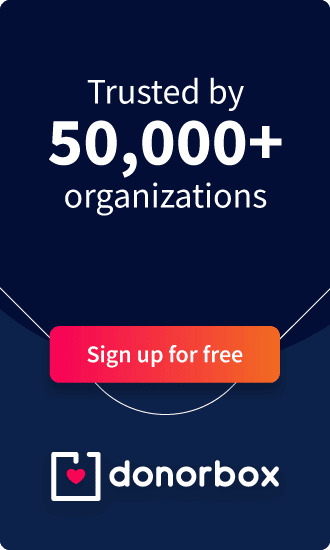
Donorbox
Start fundraising in 15 minutes (absolutely free)
- Easy to the setup donation page
- Lowest fees of just 1.5% on donations
- Can start fundraising in just 15 minutes
- No technical experience is needed
- Hassle-free donation experience
Conclusion
Fundraising can be challenging, but it doesn’t have to be an insurmountable task. By following these strategies, you can make it easier to raise money and meet your organization’s funding goals.
Finally, don’t forget that fundraising is a skill that you can improve with time and effort. You don’t have to be perfect out of the gate. You don’t have to figure everything out right away. You can learn by doing, by failing, and by trying again.
So don’t get discouraged if you’re facing some challenges with your fundraising efforts. Instead, use them as an opportunity to learn and improve. When you’re facing fundraising challenges, remember that you’re not alone. Many other nonprofits are facing the same challenges you are. You can learn from their experiences and from those
Disclaimer: This post may contain affiliate links and we might earn a small commission on qualifying purchases at no additional cost to you. This helps us run this website and share more such valuable posts.
